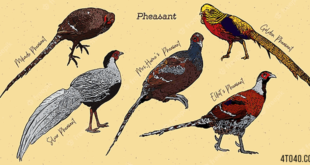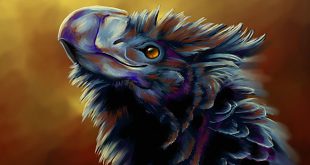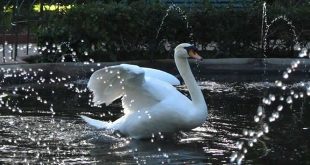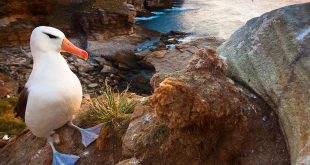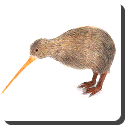 Kiwi — Kiwi are flightless birds endemic to New Zealand, in the genus Apteryx and family Apterygidae.
Kiwi — Kiwi are flightless birds endemic to New Zealand, in the genus Apteryx and family Apterygidae.
At around the size of a domestic chicken, kiwi are by far the smallest living ratites and lay the largest egg in relation to their body size of any species of bird in the world. There are five recognised species, all of which are endangered; all species have been adversely affected by historic deforestation but currently large areas of their forest habitat are well protected in reserves and national parks. At present, the greatest threat to their survival is predation by invasive mammalian predators.
The kiwi is a national symbol of New Zealand, and the association is so strong that the term Kiwi is used all over the world as the colloquial demonym for New Zealanders.
There are five known species of kiwi, as well as a number of subspecies.
-
The Southern Brown Kiwi, Apteryx australis, relatively common species of kiwi known from south and west parts of the South Island that occurs at most elevations. It is approximately the size of the Great Spotted Kiwi and is similar in appearance to the Brown Kiwi but its plumage is lighter in colour. Ancient DNA studies have shown that in prehuman times the distribution of this species included the east coast of the South Island. There are several subspecies of the Tokoeka recognised:
-
The Okarito Kiwi, also known as the Rowi or Okarito Brown Kiwi, Apteryx rowi, first identified as a new species in 1994, is slightly smaller, with a greyish tinge to the plumage and sometimes white facial feathers. Females lay as many as three eggs in a season, each one in a different nest. Male and female both incubate. Distribution of these kiwi are limited to a small area on the west coast of the South Island of New Zealand. However, studies of ancient DNA have revealed that in prehuman times it was far more widespread up the west coast of the South Island and was present in the lower half of the North Island where it was the only kiwi species detected.
-
The very small Little Spotted Kiwi, Apteryx owenii is unable to withstand predation by introduced pigs, stoats and cats, which have led to its extinction on the mainland. About 1350 remain on Kapiti Island and it has been introduced to other predator-free islands and appears to be becoming established with about 50 ’Little Spots’ on each island. A docile bird the size of a bantam, it stands 25 cm (9.8 in) high and the female weighs 1.3 kg (2.9 lb). She lays one egg which is incubated by the male.
-
The largest species is the Great Spotted Kiwi or Roroa, Apteryx haastii, which stands about 45 cm (18 in) high and weighs about 3.3 kg (7.3 lb) (males about 2.4 kg (5.3 lb)). It has grey-brown plumage with lighter bands. The female lays just one egg, which both parents then incubate. Population is estimated to be over 20,000, distributed through the more mountainous parts of northwest Nelson, the northern West Coast, and the Southern Alps.
-
The Stewart Island Southern Brown Kiwi, Apteryx australis lawryi, is a subspecies of Tokoeka from Stewart Island.
-
The Northern Fiordland Southern Brown Kiwi (Apteryx australis ?) and Southern Fiordland Tokoeka (Apteryx australis ?) live in the remote southwest part of the South Island known as Fiordland. These sub-species of Tokoeka are relatively common and are nearly 40 cm (16 in) tall.
-
The Haast Southern Brown Kiwi, Apteryx australis ‘Haast’, is the rarest subspecies of kiwi with only about 300 individuals. It was identified as a distinct form in 1993. It occurs only in a restricted area in the South Island’s Haast Range of the Southern Alps at an altitude of 1,500 m (4,900 ft). This form is distinguished by a more strongly downcurved bill and more rufous plumage.
-
The North Island Brown Kiwi, Apteryx mantelli or Apteryx australis before 2000 (and still in some sources), is widespread in the northern two-thirds of the North Island and, with about 35,000 remaining, is the most common kiwi. Females stand about 40 cm (16 in) high and weigh about 2.8 kg (6.2 lb), the males about 2.2 kg (4.9 lb). The North Island Brown has demonstrated a remarkable resilience: it adapts to a wide range of habitats, even non-native forests and some farmland. The plumage is streaky red-brown and spiky. The female usually lays two eggs, which are incubated by the male.
Kiwi are shy and usually nocturnal. Their mostly nocturnal habits may be a result of habitat intrusion by predators, including humans: in areas of New Zealand where introduced predators have been removed, such as sanctuaries kiwis are often seen in daylight. Kiwis are creatures with a highly developed sense of smell, most unusual in a bird, and are the only birds with nostrils at the end of their long bill. Kiwi eat small invertebrates, seeds, grubs, and many varieties of worms. They also may eat fruit, small crayfish, eels and amphibians. Because their nostrils are located at the end of their long beaks, Kiwi can locate insects and worms underground without actually seeing or feeling them.
 Kids Portal For Parents India Kids Network
Kids Portal For Parents India Kids Network
